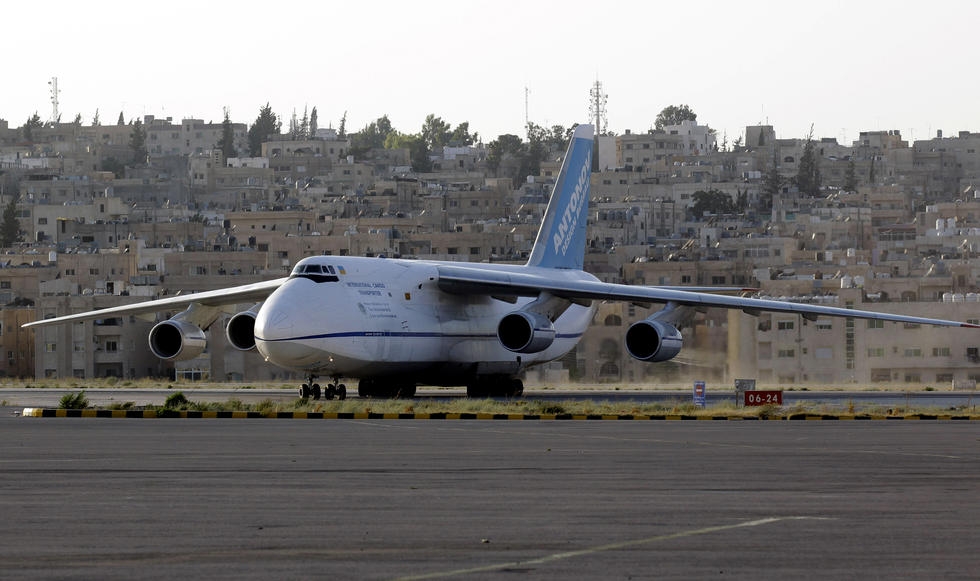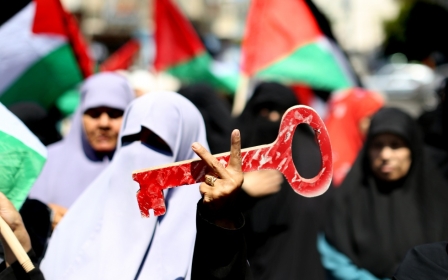UN urges Jordan not to send Palestinian refugee back to Syria

A Palestinian refugee and his son who were stranded for 15 days at the Dubai International Airport have been flown to Jordan, the man told Middle East Eye, as the UN urged the Jordanian government not to send the two back to Syria.
Wael al-Sahlee, a refugee originally from Damascus' Yarmouk Camp who was recently forced to leave Jordan and was subsequently denied entry to several Arab countries, told MEE that the Emirati authorities had sent him and his son on a plane back to Jordan.
MEE spoke to Sahlee on the phone as his plane was landing in Amman, and it was not yet clear whether he had been allowed to enter the country. Subsequent phone calls to Sahlee went unanswered.
According to a source in Amman who has been in touch with Sahlee, the Jordanian authorities have now granted him and his son entry.
Supporters of Sahlee and his son say they fear the pair was deported from the UAE due to media attention surrounding the case.
Earlier, the source said the authorities had allowed Sahlee to enter but not his son. The two had planned to stay in the airport until they could find a sponsor to help them, the source told MEE on the condition of anonymity.
Sahlee had said Wednesday that he feared being sent back to Syria, where he says he is wanted by the Assad regime.
Chris Gunness, spokesman for the UN agency for Palestinian refugees (UNRWA), appealed Thursday to the Jordanian government not to send Sahlee to Syria.
“I strongly appeal to the Jordanian government not to send Wael and his son back to Syria, but to resolve the humanitarian case in accordance with international standards,” Gunness told MEE via telephone.
In an interview with MEE on Wednesday, Sahlee said that he had been doing humanitarian work in Yarmouk camp when he began to fear arrest and mistreatment by the Syrian regime, which he said had accused him of “aiding terrorists”.
In 2012, Sahlee and his son fled Yarmouk to Jordan where they lived without a legal residence permit for two and a half years – the country has a strict policy concerning Palestinian refugees. The Jordanian authorities then forced Wael to leave the country, and he and his son boarded a plane to Sudan via Dubai. The Sudenese authorities would not grant them a visa, however, and sent them back to Dubai. They were then stuck at the airport for 15 days; Sahlee said UAE in addition to several other Arab countries had denied them visas. The Emirati authorities threatened to send them back to Syria, he added.
It wasn’t until Thursday that the authorities flew him to Jordan, without any promise that the country would let him in.
Gunness told MEE that Sahlee’s case "illustrates the multiple vulnerabilities of Palestinian refugees".
Palestinian refugees "find themselves in a place like Yarmouk”, Gunness said, referring to the Damascus-based camp that has been besieged by the Assad regime for over two years, with frequent reports of malnutrition and starvation of its mainly Palestinian residents. “Where do they go? They don’t have a flight option into Lebanon. Where do these people go?"
“They take to the high seas and drown, tragically,” Gunness said. “If they’re lucky, they get to Europe where they live marginalised and impoverished lives."
MEE’s phone calls to the United Nations High Commissioner for Refugees (UNHCR) offices in Geneva went unanswered Thursday evening.
Prior to the civil war in Syria, around 570,000 Palestinian refugees lived in Syria, including many of the Palestinians who were forced from their lands in the Nakba of 1948, those displaced in the Six Day War of 1967, and their descendants.
According to UNRWA, since 2011 at least 80,000 of these Palestinians have been forced to leave Syria due to the turmoil in the country.
Friday marks the 67th anniversary of the Nakba, which Palestinians commemorate on 15 May each year.
Middle East Eye propose une couverture et une analyse indépendantes et incomparables du Moyen-Orient, de l’Afrique du Nord et d’autres régions du monde. Pour en savoir plus sur la reprise de ce contenu et les frais qui s’appliquent, veuillez remplir ce formulaire [en anglais]. Pour en savoir plus sur MEE, cliquez ici [en anglais].





